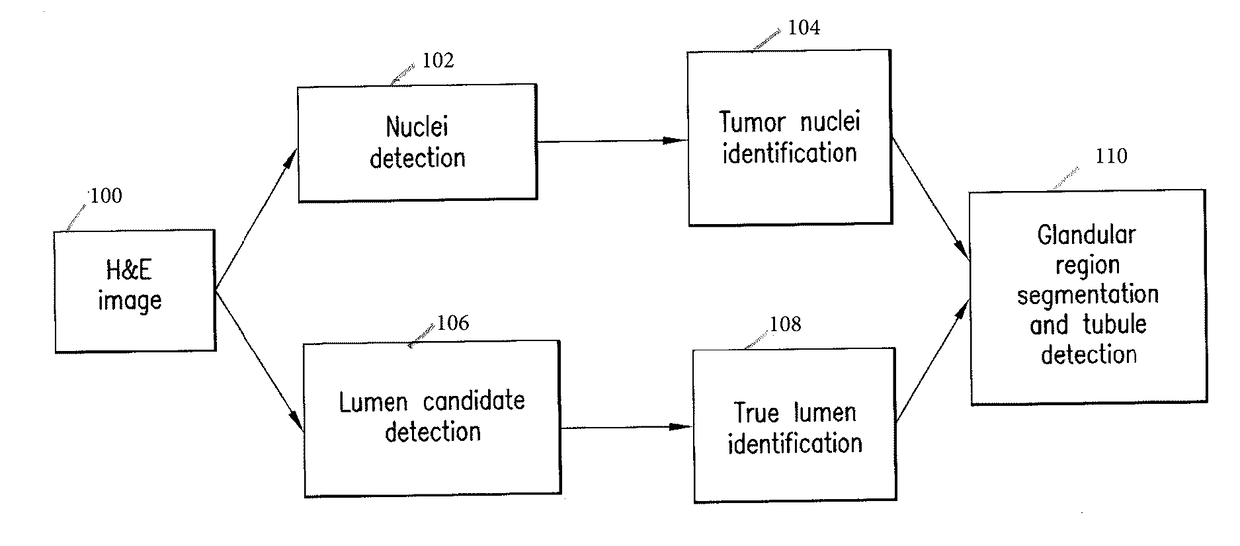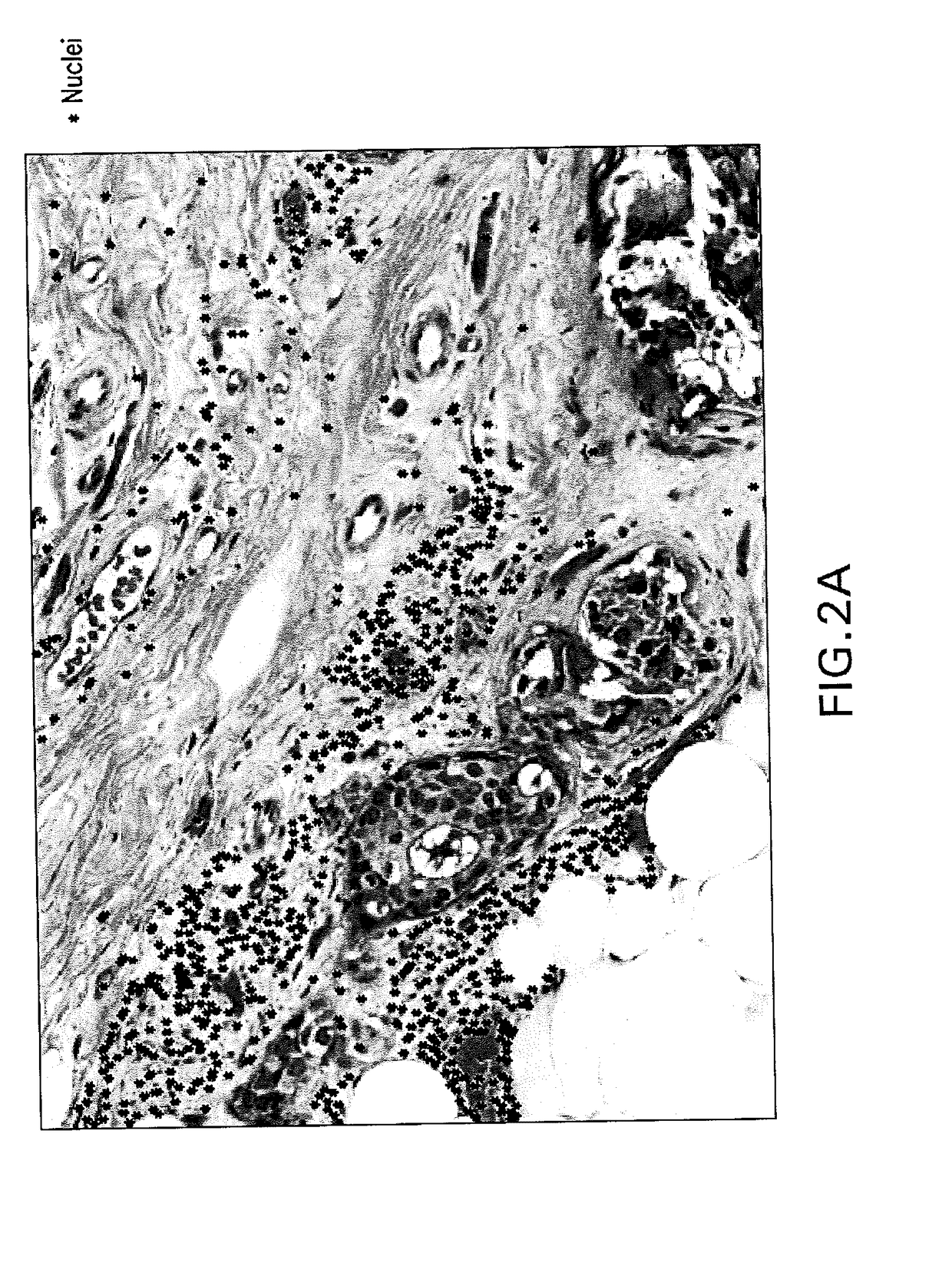Automatic glandular and tubule detection in histological grading of breast cancer
a breast cancer and histological grading technology, applied in the field of histology, can solve the problems of adversely affecting the estimation of tubule percentage, time-consuming and subjective process, and unsatisfactory results
- Summary
- Abstract
- Description
- Claims
- Application Information
AI Technical Summary
Benefits of technology
Problems solved by technology
Method used
Image
Examples
Embodiment Construction
[0016]Methods, systems, and apparatuses are provided for automatically identifying tubule glandular regions and non-tubule glandular regions in an image of a breast tissue sample by: (a) identifying tumor nuclei and true lumina in the image; and (b) identifying glandular regions by grouping the tumor nuclei with neighboring lumina and neighboring tumor nuclei, wherein glandular regions containing true lumina are classified as tubule glandular regions, and wherein glandular regions lacking true lumina are classified as non-tubule glandular regions. Tubule percentage and tubule score can then be calculated. Tubule percentage (TP) as understood herein is the ratio of the tubule area to the total glandular area. The analysis can be applied to whole slide images and can resolve tubule areas with multiple layers of nuclei. These methods, systems, and apparatuses are particularly useful in pathological scoring systems for breast tumors, such as NHS. Other utilities and advantages of the pr...
PUM
 Login to View More
Login to View More Abstract
Description
Claims
Application Information
 Login to View More
Login to View More - R&D
- Intellectual Property
- Life Sciences
- Materials
- Tech Scout
- Unparalleled Data Quality
- Higher Quality Content
- 60% Fewer Hallucinations
Browse by: Latest US Patents, China's latest patents, Technical Efficacy Thesaurus, Application Domain, Technology Topic, Popular Technical Reports.
© 2025 PatSnap. All rights reserved.Legal|Privacy policy|Modern Slavery Act Transparency Statement|Sitemap|About US| Contact US: help@patsnap.com



